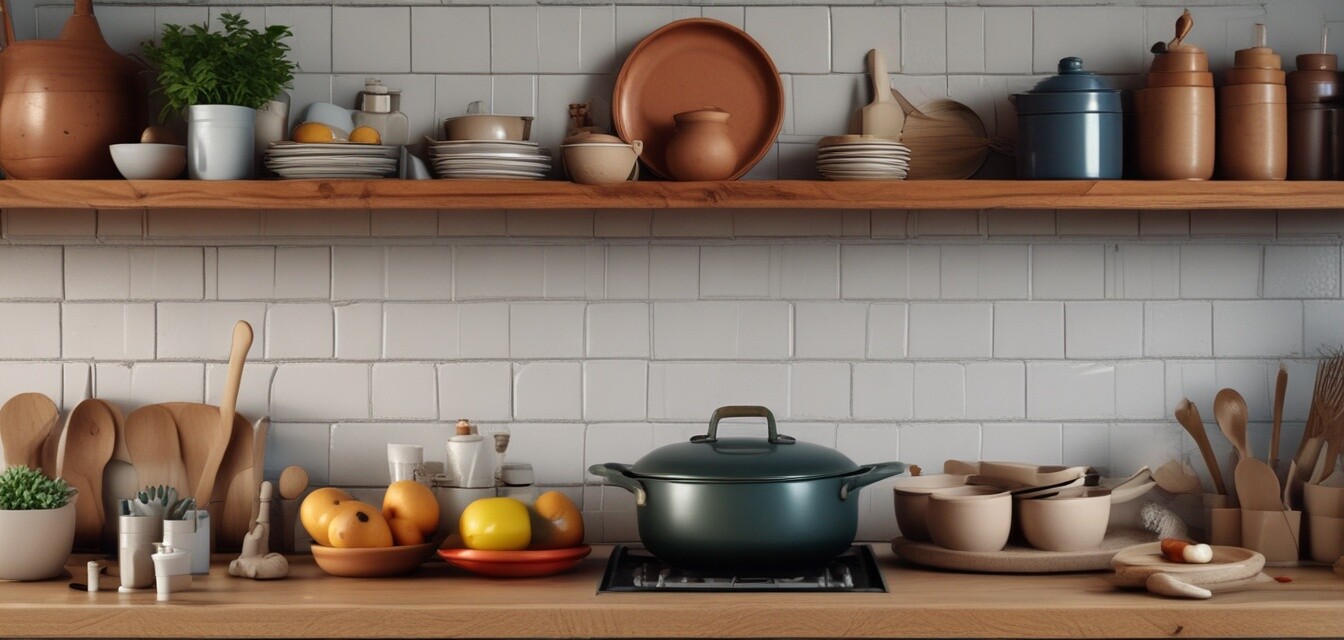
The revival of traditional cooking methods
Key Takeaways
- Traditional cooking methods are gaining popularity due to their sustainability benefits.
- Slow cooking and resource-efficient practices help minimize waste and enhance flavor.
- Using eco-friendly kitchenware complements these methods and promotes a greener kitchen.
In recent years, people are increasingly turning back to traditional cooking methods as a response to the fast-paced lifestyle that defines modern society. The emphasis on sustainability has sparked a revival of these age-old practices, leading to a renewed appreciation for slow cooking and resource-efficient techniques. Let's explore this fascinating trend and its connection to a more sustainable kitchen.
Why traditional cooking methods are resurfacing
The resurgence of traditional cooking methods can be attributed to several factors that resonate with today's consumers:
- Sustainability: These methods often involve using less energy and fewer resources.
- Flavor enhancement: Slow cooking allows flavors to develop more fully, resulting in richer dishes.
- Connection to heritage: Many people find joy in learning about and practicing the cooking techniques passed down through generations.
Popular traditional cooking methods to consider
There are numerous traditional cooking techniques that anyone can incorporate into their culinary practices. Here are some notable examples:
| Cooking Method | Description | Benefits |
|---|---|---|
| Slow cooking | Utilizes low heat over a long period to cook foods thoroughly. | Enhances flavor and tenderness while requiring minimal supervision. |
| Fermentation | Involves the transformation of food by microorganisms, resulting in unique flavors. | Promotes preservation and adds health benefits to food. |
| Wood-fire cooking | Cooking over an open flame or embers that impart a distinct flavor. | Creates a unique taste while utilizing sustainable fuel sources. |
How to combine traditional cooking with eco-friendly kitchenware
As you embrace traditional cooking methods, consider integrating sustainable kitchenware into your routine. Here are some suggestions:
- Bamboo kitchenware: Natural and biodegradable, bamboo utensils are perfect for slow cooking.
- Compostable kitchen tools: Designed to break down easily, these tools minimize landfill waste.
- Reusable silicone products: Ideal for freezing and storing leftovers from your traditional meals.
Traditional cooking methods and the modern eco-friendly lifestyle
In today’s world, linking traditional cooking with an eco-friendly lifestyle enhances both the dining experience and the environment. Cooking slowly and mindfully can lead to:
- Less food waste: Traditional techniques often utilize the entire ingredient, reducing excess.
- Improved nutritional value: Foods retained their natural vitamins and minerals through careful cooking.
- A deeper appreciation: Investing time in cooking connects individuals to their food sources and cultural heritage.
Emerging trends in traditional cooking
As traditional cooking methods grow in popularity, new trends are emerging, such as:
- Zero-waste cooking: Utilizing every part of an ingredient and avoiding unnecessary waste
- Seasonal cooking: Focusing on using ingredients that are available locally and seasonally.
- Artisanal practices: Reviving forgotten techniques that emphasize craftsmanship and quality.
Conclusion
The revival of traditional cooking methods highlights a shift toward sustainability and mindful living. By embracing slow cooking and resource-efficient practices, we can reconnect with our food, respect our environment, and transform our kitchens into eco-friendly spaces. Incorporating sustainable kitchenware can further enhance these practices, making a substantial difference in our daily lives. As you begin exploring the world of traditional cooking, unleash your creativity and embrace the delicious potential of sustainable culinary practices.
Pros
- Encourages sustainable living through reduced energy consumption.
- Enhances the flavor of dishes, providing a delightful dining experience.
- Fosters a connection with culinary heritage and traditions.
Cons
- May require more time and patience compared to modern quick cooking methods.
- Some traditional methods may require special equipment or skills.
For more insights into eco-friendly kitchenware, be sure to explore our News and Trends category, where we cover new product releases and innovative materials in the industry.


